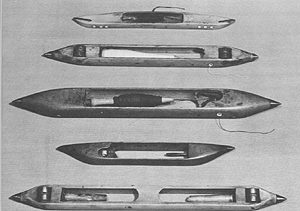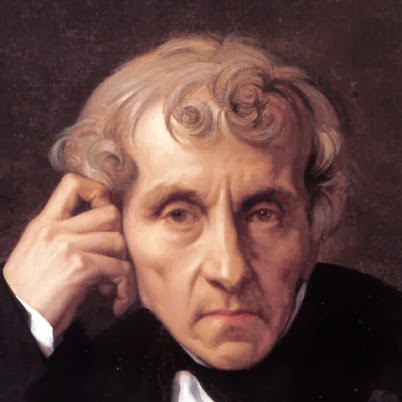Industrial Revolution
This period began in th 18th century and ended in 19 th
century. It was a period that made huge differences in Agriculture,
manufacturing, mining, transport, and technology which effected how people look
in socio economics and started to analyse how to progress the society. It was a
period that started the cultures from United Kingdom and then went through
Europe, North America and all over the world. The Industrial Revolution was
influenced in daily life because of transformation in economy.
Before the industrial revolution every little thing had to
be by hand but now there is a huge variety of technology and machinery to make
something you want possible in less time. Farmers also started to leave their work to
join a factory. The first innovation for textile industry was the flying
shuttle in 1733 made by John Jay that made it easy to weave and from there different
inventors completed to invent more inventions. Industrial revolution even
started to transform how to make other items such as furniture made by wood and
other useful items made of both resistant and non resistant materials.
Picture from the industrial revolution
Flying shuttle invented in 1733 by John Kay
Modern Factory started in England
Today we live with al lot of products that we can`t imagine
our lives without them. Before the industrial revolutions every thin was different
in a way that someone who had two shirts were considered richer than the one
who had 1 shirt. Until Sir Richard Arkwright designed new spinning mills which were capable to turn threads and yarn into weaved fabric.
Sir Richard Arkwright had the pride to say that he began
the modern factory with good designed spinning machine. England started to
export the ready weaved fabric to other countries. Spinning Machine and the modern Factory was a
door for al lot of jobs and some people started to move to England to be able
to find a job. Industrial revolution
gained some health benefits due to almost everyone was exposed to wear
something to cover their body and be protected from infections of any other
health conditions.
The disadvantages of that time were not aware of safety in
factories and were leaving dust all over the factory but by time everything
settles and became more hygienic and safe to work in.
Sir Richard Arkwright
The factory in England
The spinning Jenny Invented by James Hargreaves in 1764
The spinning Jenny made it easier to produce a yarn or
thread from fibres. People stories say
that It was introduced from a carpenter and a weaver when his daughter Named
Jenny taped on a spinning wheel and as James Hargreaves observed closely how
the spindle across the floor the idea popped in his mind to create the
spinning Jenny. Before the introduction of the spinning Jenny there was already
an invention with the same function but
was not improved enough but no one know
who was the person behind the spinning wheel of the 13th century.
The spinning Jenny
Samuel Slater
Samuel was the one who introduced the industrial revolution
to America. Samuel Slater was a manufacturer. He loved machinery and made
variety of textiles technology to make the industry easier for professionals
and for people who had a hobby doing these things in America. He has designed
the textiles mills and managed to build up a cotton spinning machine.
Samuel Slater who introduced the industrial revolution to America
Textile Mill Samuel Slater designed
Assembly line
The Assembly line was an important part in industrial
revolution. Assembly line is an order of workers and machines in a work place
or factory which are assemble products. Every individual had there own responsibilities
to make certain work in certain time to make the products done. The factory
started to have sections of specific process. Assembly line was the beginning
of faster production and because of that prices were cheaper so all the people
can effort to buy the items. Employments completed to become easier to enter the company. It began
in 1908 and completed to develop till 1915 from ford Motor company. Behind the
assembly line there was Henry Ford who had a mind of a genius in fast production. Although women workers was happy that they got a workplace they still were treated
bad abused mentally and sometimes physically. In the 19th and
20th century started to protest and making strikes to bring workers rights.
Progressive era
On the 20th century started the progressive era and here when
the labor quality improved. They tried their best to improve the rights of the employees
and women rights both if they are working as housekeepers and in a production
industry. The children who were working
at that time started to work without a lot of harsh rules and government bring
minimum working age and maximum allocated hours realistically enough to be
worked without feeling too much stress.
women on strikes
working in Assembly line
in time they completed to make changes for women house wife's and employees rights. Now a days they have the right to take leave, a lot of companies have good salaries and have labor to fight for worker rights. The Progressive era was just the beginning to remove harsh rules in work places.
Thomas Savery- steam engine
There were other useful inventions in Industrial revolution
on of them is the steam engin by Thomas savery who were an English Military
engineer. The steam engline was
introduced in 19th century
Steam engine
Thomas Savery who invented the steam engine.
References:
CC-BY-SA (2003).Industrial revolution[internet].[online]
Available on
http://www.princeton.edu/~achaney/tmve/wiki100k/docs/Industrial_Revolution.html
Accesed on 14 th March, 2014
Mary Bellis (2014). about.com .Inventors. Industrial
revolution-timeline of textiles machinery. Available on: http://inventors.about.com/library/inventors/blindustrialrevolutiontextiles.htm
Accessed on: 14th March, 2014
Mary Bellis (2014). About.com. inventors. Industrial
revolution-Pictures from the industrial revolution. [online]. Available on: http://inventors.about.com/od/indrevolution/ss/Industrial_Revo_2.htm
Accessed on: 14th March. 2014
Mary Bellis (2014). About.com. Inventors.The spinning wheel.
[Online]. Available on: http://inventors.about.com/od/sstartinventions/a/Spinning-Wheel.htm
Accessed on 14th March,2014
Mary Bellis (2014). About.com. Inventors. spinning frame-
water frame. [Online]. Available on: http://inventors.about.com/library/inventors/blspinningframe.htm#slater
Accessed on: 14th March, 2014
History (2014).History. Industrial Revolution. [Online].
Available on: http://www.history.com/topics/industrial-revolution Accessed on:
14th March, 2014
GreenNet. 19TH and early 20th century. [Online]. Available on:
http://www.striking-women.org/module/women-and-work/19th-and-early-20th-century
Accessed on: 14th March,2014
PBS online (1998).A science odessey. People and
discoveries.[online]. Available on : http://www.pbs.org/wgbh/aso/databank/entries/dt13as.html
Accessed on: 14th March, 2014
Mary Bellis (2014). Abot.com. Inventors. The history of
steam engines. [Online]. Available on: http://inventors.about.com/library/inventors/blsteamengine.htm
Accessed on: 14th March,2014

.jpg!Blog.jpg)
.jpg)

.jpg)





.jpg)















.jpg)











.jpg)






